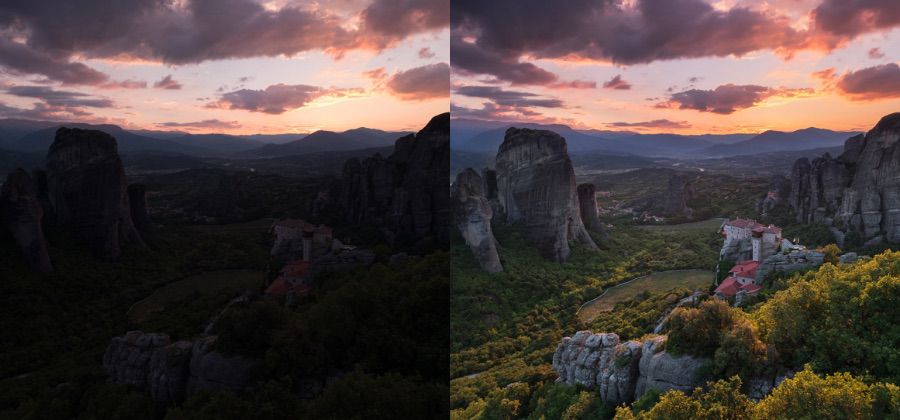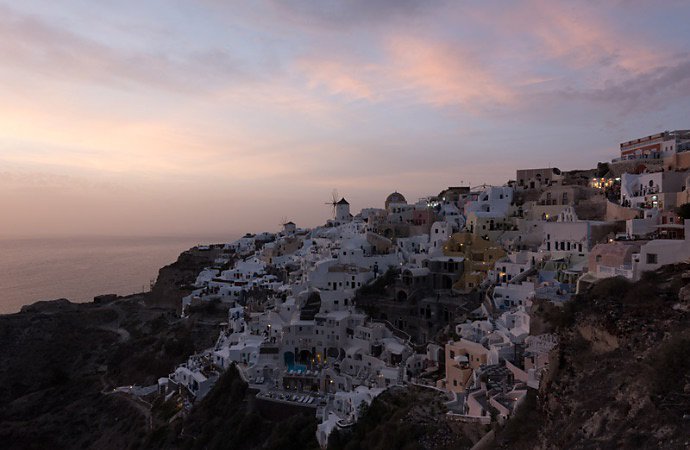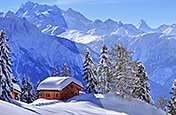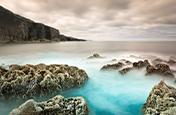RAW vs. JPEG: Which format should you shoot in?
The file format you choose to photograph in has a huge impact on your final image. Dive into the differences of each so you can make the right choice.

File format can make a big difference in your photos.
In your DSLR camera settings, you’ll find two shooting formats: RAW and JPEG. What’s the advantage of RAW format? What is a RAW image? Is RAW or JPEG superior? Every photographer interested in digital photography runs into the file type question at some point.
What is a RAW file?
A RAW file is lossless, meaning it captures uncompressed data from your camera sensor. Sometimes referred to as a digital negative, you can think of a RAW file as the raw “ingredients” of a photo that will need to be processed in order to bring out the picture’s full potential. As you might expect, the tradeoff for these detailed files is that RAW files are quite a bit larger than JPEG files. Still, most professional photographers shoot in RAW because it gives them more information to work with in the post-processing phase.
What is a JPEG file?
Unlike RAW images, JPEG images are compressed versions of RAW files. “Think of a zip file,” says photographer Nicole Morrison. You’re compressing a ton of information into a smaller package. “But all that extra information in RAWs is what gives you the latitude to tweak the white balance and exposure, for example, to a much larger degree than with a JPEG.”
In addition to their efficient compression capabilities, JPEGs are popular because the camera does a lot of processing work for you, so your photos look more finished straight off the camera.
Differences between the image files.
Now that you’re familiar with the defining characteristics of each file type, see how they stack up in detail. Here are some of the most prominent factors to consider when you choose between JPEG and RAW.
The main drawback of shooting RAW is how much space the files swallow up. This is the tradeoff you have to make for that higher image quality. Photographer Jenn Byrne emphasizes the importance of having enough storage on hand when shooting RAW. “If you’re going from JPEG to RAW you might be surprised at how much storage you need in your memory card.” But don’t let that discourage you from giving it a try. “Hard drives and memory cards are so much cheaper than they were 15 years ago. It’s not as cost prohibitive to shoot RAW anymore,” points out Byrne.
Higher image quality translates into more available data when it comes to photo editing, giving RAWs a definitive edge over JPEGs. Editing programs like Adobe Camera RAW, Bridge, or Lightroom are built for fine-tuning RAWs into polished final photos.
“The good thing about photo editing is that Lightroom is not editing RAW photos. So when you export JPEGs from Lightroom, it’s creating a unique file, not changing the data in your RAW photo,” explains Morrison. This is called non-destructive editing and means you can export RAWs as JPEGs, TIFFs, DNGs, and more, giving you more flexibility to further manipulate without losing the original file.
One of the largest benefits of RAW is the ability to recover shadows and highlights in post-processing without bringing in the grainy noise usually associated with high ISO settings. RAWs are very forgiving if you have severely underexposed or overexposed areas.
“When you’re shooting in JPEG, it’s really important to nail your exposure,” Morrison points out. If you try to pull up shadows or bring down highlights on your JPEG, it could result in banding or posterization. Both effects are due to the limited color and tonal spectrum of 8-bit JPEGs. To help guard against this, Morrison suggests enabling highlight indicators. Most camera manufacturers have this feature, which alerts you to the areas in your photo where highlights have been blown out in the preview screen.
With JPEG files, the white balance is already balanced. This is a big reason why JPEGs look more finished than their RAW counterparts straight off the camera. “A change you can make in a one-step increment in Lightroom, like white balance, you can only make in a five-step increment with JPEGs,” Morrison points out. She recommends learning to shoot in manual white balance so you can bring it to your desired point later.


Images by Elia Locardi.
The bottom line.
RAWs give you more information to work with, but you have to put more time into that work. If speed is of the essence, or you want a point-and-shoot experience that yields photos ready to use out of the box, JPEGs might actually be a better option than RAWs.
One option for making the transition from JPEG to RAW is to shoot in RAW + JPEG mode. This is great at helping you learn the difference between the two image formats while you learn the ropes of RAW editing. “Shooting JPEG format is a great place to start,” advises Morrison. “At some point you’re going to want more control and you’re going to want to move to RAW. Just start somewhere; there’s nothing wrong with shooting JPEG.”
Now that you know the ins and outs of RAWs and JPEGs, you can confidently choose the format that fits your workflow and photography needs.
Contributors
Do more with Adobe Photoshop Lightroom.
Edit photos easily with Lightroom presets, Super Resolution, easily share photos from any device, and access your projects anywhere with cloud photo storage management.
You might also be interested in…
Adjusting white balance settings to improve photos.
Understand white balance and how to enhance the look of images using color balance tips.
Make your own photo filters with Adobe Photoshop Lightroom presets.
Discover how Presets give you all the options and style of photo filters and so much more.
Learn about the dynamic range of your camera and how to manipulate it to create the images you want.
How to enhance photos.
Balance the contrast, shadow, temperature, and clarity of your photos with these photo enhancing techniques.
Get Photoshop Lightroom.
Edit, organize, store, and share photos from anywhere.
7 days free, then US$9.99/mo.



